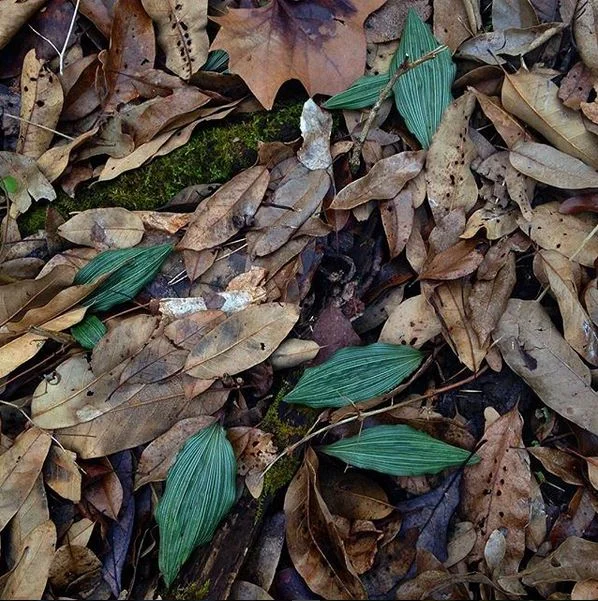Whereas most plants here in the Northern Hemisphere have largely geared down for the long winter, there is one species that has only recently begun a new stage of growth. Though it may seem damaging to produce leaves when a hard frost is just around the corner, that is exactly what this plant is doing. What's even more bizarre is that the plant in question is an orchid.
The putty-rood orchid (Aplectrum hyemale) may seem strange to most. Though it flowers during the same time as most of our terrestrial orchids (May through June), its display can be hard to track down. In fact, lacking any knowledge of a specific location, it is more likely that you will stumble across one before you pick it out of the hustle and bustle on the forest floor.
Flowering occurs at a different time than leaf out. The solitary flower stalk gives way to a single leaf starting in late summer or early fall. Why the heck would this plant start its photosynthetic lifecycle when everything else is about ready to go dormant? The answer is competition. Summer is not a bright season for those growing on the forest floor. This is especially true for a plant that only produces a single leaf.
What the putty-root is doing with its oddly timed leaf production is taking advantage of a dormant canopy. With trees and herbaceous leaves out of the way, the putty-root is able to soak up as much sun as it can get. This is a similar strategy adopted by spring ephemerals around the globe. But what does the plant have to gain from having leaves in the fall? Why not wait until spring to leaf out?
As it turns out, it simply doesn't have to. The photosynthetic machinery within the leaves of the putty-root perform exceptionally well at low temperatures. Whereas most plants simply can't photosynthesize when it starts getting too cold, the putty-root is able to photosynthesize at temperatures as low as 2° C (35.6° F)! Not only does this enable the plant to get a jump start come spring, its also able to make food throughout most of fall and even early winter.
There does seem to be a limit to this. Once temperatures drop below 2° C, the machinery can't keep up and photosynthesis grinds to a halt. This is further complicated by the fact that the leaves are often buried under snow for months at a time. Certainly its mycorrhizal associations help feed the plant, even when it isn’t actively photosynthesizing. Regardless, this strategy is a great way of getting an extra kick while everything else is slowing down. Stories such as this bring to mind the story of the tortoise and the hare. Sometimes slow and steady really does win the race!
Photo Credit: Lance Merry (www.lancemerry.com)


